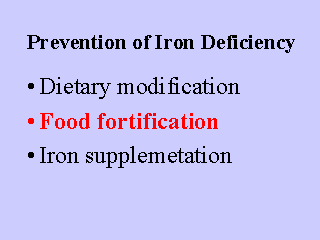|
|
|
|
front |1 |2 |3 |4 |5 |6 |7 |8 |9 |10 |11 |12 |13 |14 |15 |16 |17 |18 |19 |20 |21 |22 |23 |24 |25 |26 |27 |28 |29 |30 |31 |32 |review |
 |
Food fortification with Iron is considered a long term strategy
to prevent ID. The effectiveness of this strategy depends on the selected iron compound and vehicle and on the acceptability of the fortified product by the consumers. Different characteristrics make food fortification an adequate strategy from a public health perspective: Ferrous sulfate is the most common iron compound used to fortify foods, but elemental iron and iron fumarate have also been used. Fortificants must meet the following criteria in order to be selected: good bioavailability, no interaction with flavour or color systems, affordable cost, acceptable colour, solubility and particle size. Weat-flour, cereal-based foods, infant weaning foods (and infant formula), salt, sugar and rice constitute the vehicles been fortified with iron. The firs three examples are the most common vehicles which showed successful results. |
|
|
|
|
front |1 |2 |3 |4 |5 |6 |7 |8 |9 |10 |11 |12 |13 |14 |15 |16 |17 |18 |19 |20 |21 |22 |23 |24 |25 |26 |27 |28 |29 |30 |31 |32 |review |